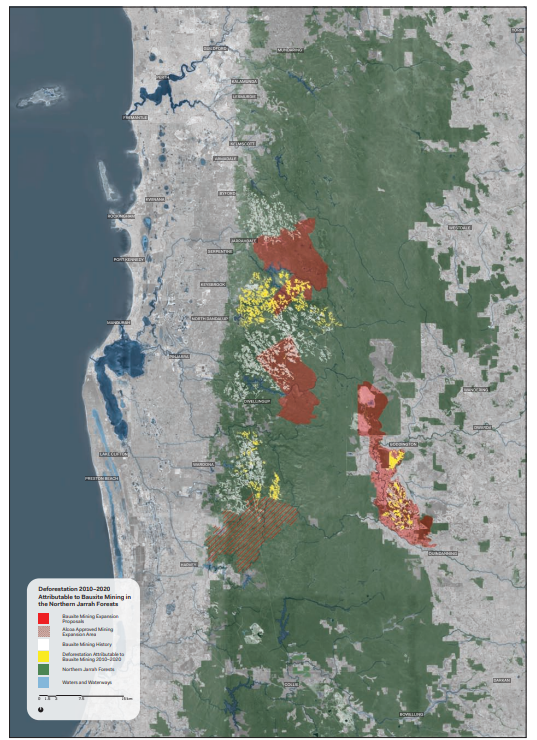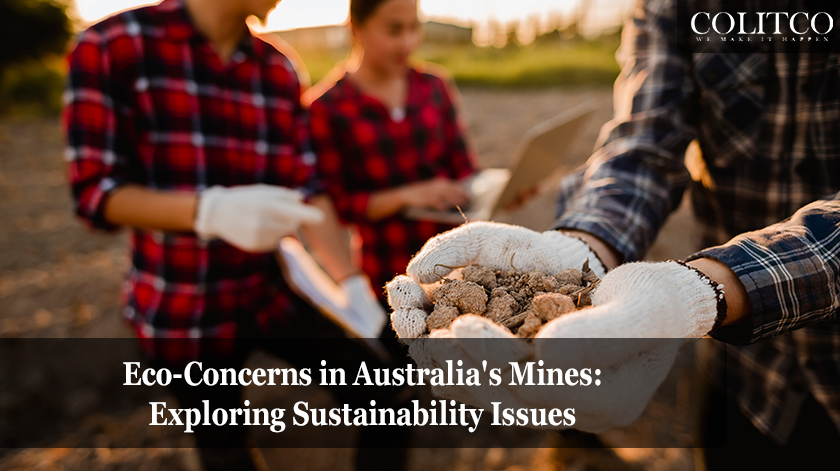Despite being the world’s 12th largest economy, Australia faces significant economic and environmental challenges. The mining industry, in particular, is plagued by substantial sustainability and operational problems. What exactly are the issues? The gold mines in Australia are the source of a lot of mine garbage that often remains untreated. Many green areas in the country have been cleared to build mines. There are many more problems. This article explores them in detail.
Problems with Garbages
Blue Environment Pty Limited released a “National Waste Report 2022,” which shows which types of mines produce the most garbage in Australia. Gold fields in Australia show a grave concern in this case. It has been shown that gold mines in Australia produce the most waste among all mining commodities. From 2020 to 21, the amount of garbage was 242 megatonnes (Mt). Iron ore mining produced 146.2 Mt, Silver-lead-zinc ore mining produced 78 Mt, and Copper mining produced 68.8 Mt of waste in the same period. In 2020-21, the amount of waste produced by the mining industry was 44 times higher than that produced by municipal waste in Australia. It is estimated that 96% of this mining waste was deposited in tailing dams.

Figure 1: Amount of waste generated by different mining commodities in Australia (2020-21)
Problems with Pollution
Mining industries in Australia are also a massive source of pollution. In 2019, the Australian Greenhouse Emissions Information System (AGEIS) showed some statistics that became a genuine concern for the country’s mining operations. Coal companies reported through the AGEIS that their mines emitted 898,000 tonnes of methane into the atmosphere, accounting for 5% of Australia’s total greenhouse gas emissions. Here is the information if you’re unaware of how methane contributes to pollution. With methane’s short-term climate impact being 82.5 times greater than carbon dioxide, the methane emitted by coal mines is equivalent to 74.3 million tonnes of carbon dioxide. This surpasses the 44 million tonnes of CO2 emissions from cars reported by AGEIS for 2019.
A report titled “Australia’s Emissions Projections 2023,” released by the Department of Climate Change, Energy, the Environment and Water of Australia, shows more recent data about mine pollution in Australia.
- Coal mining contributes to 49% of emissions by all mines in Australia.
- Concerns about Australian gold mines are also present here. Iron ore mines and gold mines have contributed a large portion to emissions.

Figure 2: Emissions from different mines in Australia in other years (in megatonnes of CO2 equivalent)
Problems of Deforestation
On May 3, 2022, Western Australia’s leading environment and forest conservation groups released a report titled “A Thousand Cuts,” detailing the significant impacts of bauxite mining in the Northern Jarrah Forests of the Darling Range. The report reveals that:
- At least 32,130 hectares of Jarrah, Marri, Wandoo, and related ecosystems on public land have been cleared, with 92,000 to 120,000 hectares fragmented.
- Alarmingly, 11,290 hectares were cleared between 2010 and 2020.
- Native vegetation data from WA’s DPIRD show an overall decline of 18,069 hectares in WA’s tall and medium forests during this period, 11,290 hectares due to bauxite mining.
- Alcoa and South32 (Worsley) plan to clear an additional 11,109 hectares and fragment 70,211 more.
Mongabay mentions coal and gold mines in Australia are the primary reasons for deforestation due to mining.

Figure 3: Concerns of Bauxite Mining as Mentioned in “A Thousand Cuts.”

Figure 4: Deforestation in the Northern Jarrah Forests due to bauxite mining from 2010 to 2020
According to a report by the World Wildlife Fund for Nature, deforestation linked to bauxite accounts for 8% of direct MRD (Mining Related Deforestation). This deforestation is concentrated mainly in four countries: Australia (50%), Brazil (16%), Ghana (15%), and Indonesia (14%).

Figure 5: Countries with the most mining-related deforestation or MRD (in km2). Australia comes in the top 10
Measures taken by the Government
Over the past 15 years, waste generation in Australia rose by 20%, while population and GDP grew by 25% and 38%, respectively. Despite these increases, waste per capita decreased by 3.3% since 2006-07, a trend also seen in Japan, USA, and Germany. The Australian minerals industry has embraced Towards Sustainable Mining (TSM), an internationally recognised accountability framework. TSM aids companies in evaluating, managing, and disclosing their sustainability performance at the site level, reinforcing the sector’s dedication to safety, environmental stewardship, and social responsibility. This consistent and transparent approach fosters trust and confidence among stakeholders.











